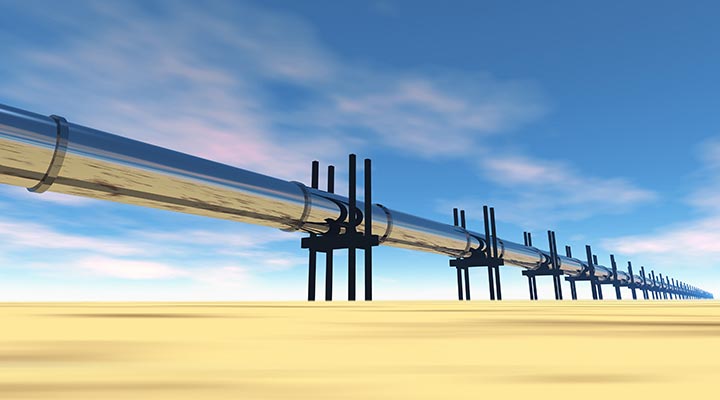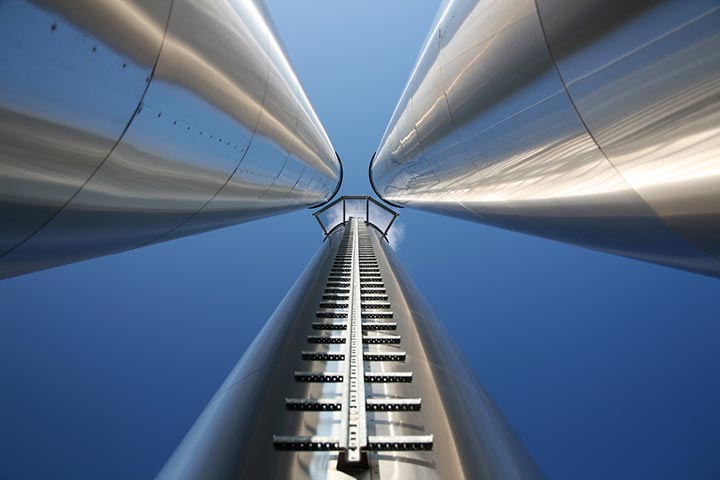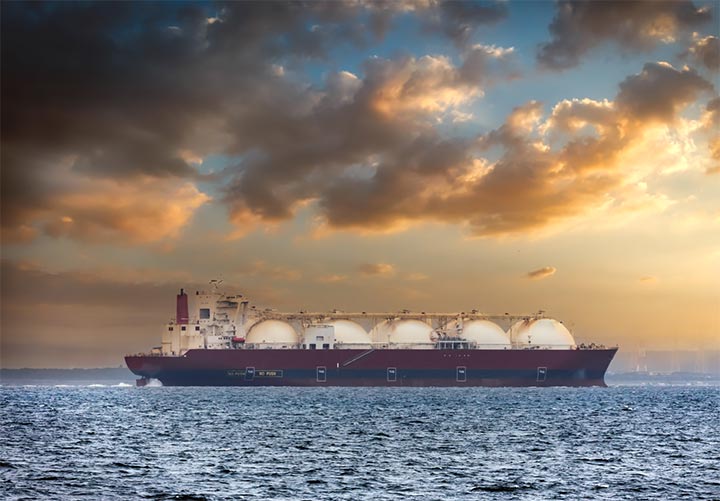
The global gas crisis: The ‘perfect’ geopolitical storm
The world is facing a natural gas crisis. It’s a perfect storm of global competition, supply issues, and Russia’s invasion of Ukraine. The gas crisis has exposed Europe’s energy insecurity at a time of international geopolitical tension and created seismic shifts in global energy trade. Some of which will have profound long-term consequences.
“The world is in the midst of its first truly global energy crisis – a shock of unprecedented breadth and complexity” – International Energy Agency
Despite the oil supply shocks of the 1970s, the International Energy Agency (IEA) has called this the “first truly global energy crisis”, and whilst it certainly is global, the epicentre is in Europe, as the continent reorientates its future energy supply and security away from Russia.
Several aggravating factors have created this ‘perfect storm’:
- Russia’s invasion of Ukraine, EU sanctions and Russia’s natural gas supply restrictions in response.
- Global competition for Liquified Natural Gas (LNG).
- Renewables failing to bridge the gap – a lack of summer wind and drought across much of Europe.
- Reduced investment in upstream oil and gas projects globally, including the long-term reduction of output from the giant Dutch Groningen gas field.
- French nuclear output is at a 30-year low, and almost half of the production capacity is offline for maintenance at the beginning of the winter.
Europe’s Unstable Energy Foundations
The gas crisis has led to record global prices for much of 2022, and even though we have seen that ease relatively over recent weeks, gas price inflation has already been a catalyst for a European reappraisal of energy priorities.
For years, EU investment decisions and European infrastructure have been built on the foundations of Russia’s energy supply. The potential geopolitical insecurity largely being overlooked due to convenience, cost, and the hope that cooperation would bring stability.
“We believe the Russian invasion of Ukraine will have profound, long-term effects on global energy markets. The current crisis is already causing a realignment of international energy trade, but this also brings significant uncertainty, and geopolitical risk, as longstanding vulnerabilities are addressed.”
The European transition from Russian energy has been swift, and the transition to new energy supplies is unlikely to be smooth. We’ll be monitoring the impact of further geopolitical tension across Europe this winter and next, and what that means for competition in global gas markets, especially as China’s ‘zero-COVID’ policy eases and demand recovers there.
The European gas markets are currently stable, despite the cold weather in recent weeks. The Dutch TTF gas price, Europe’s benchmark, has fallen below $100/MWh this week, significantly off the peak of $338 in late August, though still at historically high levels.
The increase in gas storage, a primary focus of EU countries in the months after the Russian supply shock, remains a priority but should be enough to avoid any supply issues for most of this winter. Germany, for instance, still has a total gas storage level of more than 90% and is about to bring online LNG from its first floating storage and regasification unit (FSRU). That unit is expected to start pumping gas on December 22nd.

A mild start to the European winter and efforts by EU governments to encourage consumers to reduce gas consumption also seems to have had an impact. According to Bruegel, a think-tank, demand in November was 23% down on historic trends for the selection of EU countries with already available data. This is encouraging for the integrity of Europe’s gas supply in the near term, but the real challenges may come in late winter when storage levels are depleted and demand returns.
On Monday, EU countries also agreed on a controversial gas price cap after months of division. The so-called “market correction mechanism” is set to come into force on February 15th and last for one year. Trades on Europe’s gas exchanges will be capped at €180/MWh if that price level is reached for three working days and the European wholesale gas prices are €35 above the global price of liquefied natural gas (LNG) for the same period. The cap will also not apply to over-the-counter trades, meaning buyers and sellers can circumvent it if needed. Supporters of the proposal have suggested that it would support hard-pressed consumers and economies; critics believe it could drive up demand and damage long-term supplies in the ever more globally connected LNG market. We’ll wait to see how it plays out before passing judgement, but prima facie, this doesn’t appear to be a measure that’ll be positive for Europe’s gas supply in the medium term.
There are also other important questions that we’ll be looking for European policymakers to answer as they continue to agree on a vision for what comes next:
- Will they invest in the necessary energy infrastructure while facing the challenges of a recessionary environment?
- Will they use this moment to accelerate the clean energy transition?
- How will they mitigate energy security risks on the path to net zero emissions?
The Russian Supply Shock
Russia began 2022 as the biggest exporter of natural gas to the European continent. In 2021, 41% of the EU’s gas supply came from Russia; this now stands at less than 10%. A staggeringly quick reduction, the true implications of which we’ll be assessing for years to come.
“The global gas crisis didn’t begin with the Russian invasion of Ukraine in February, but it certainly injected chaos into the already volatile global gas markets.”
Although Russia has been able to sell discounted gas to India and China, demand has not been enough to match the shortfall in European supply. The International Energy Agency (IEA) latest ‘World Energy Outlook’ illustrated how Russia’s projected gas exports have plunged compared to last year. The agency has also significantly cut its projection for Russian oil exports in the years ahead. Under the IEA’s long-term outlook to 2050, Russia’s exports never return to 2021 levels.
This is a seismic shift for the world’s biggest exporter of oil and gas, and it’s hard to underestimate just how significant this change is for the security of the global energy supply. We expect to see this shift increasing the expansion of the world’s LNG markets, but greater global competition and LNG interdependence will have an uncertain impact on energy security and geopolitics worldwide.
LNG: A Truly Global Commodity
Only 23 countries had access to Liquified Natural Gas (LNG) as recently as a decade ago. Costly import infrastructure, which took years to build, a lack of market liquidity, geopolitical risks, and contract issues worked against widespread adoption.
Today’s global LNG market is entirely different. The number of LNG-importing countries now stands at more than 40. There’s increased competition between suppliers and greater liquidity in traded markets. We’ve also seen the development of FSRU technology, meaning LNG supply capacity can respond quickly to changes in local gas demand and supply. The Hoegh Esperanza, the first of Germany’s FRSUs, is expected to supply enough gas for 50,000 households annually.

Several European countries, including the Netherlands and Germany, have invested in FSRUs to supplement their existing gas storage facilities. This short-term fix, and the concerted effort to fill Europe’s gas storage before the winter, may well mitigate the worst impact of the gas crisis for the first half of this winter. This year, the drive to fill Europe’s storage facilities was helped by a drop in China’s energy demands due to its economic downturn, but that may change if it suffers a harsh winter, relaxes its zero-COVID policy, and the economy recovers. We believe this is a multi-year challenge, and the real crunch may come in winter 2023/24 as European countries rely on LNG imports to replenish storage levels next summer.
The global LNG markets are now intimately interconnected. We’ve already seen this illustrated this year, as the knock-on effect of Europe’s sudden appetite for gas has impacted Pakistan, India, and Bangladesh’s ability to secure the LNG they needed. All have experienced significant blackouts as a result.
There have been murmurings of discontent in the region, with a perception that Europe has exported its energy insecurity with little consideration for the consequences. India, for example, has readily struck deals to import Russian oil and gas, as has China.
This may be a sign of things to come for the geopolitical tension in global gas markets. We might face a scenario where Australia and the US export LNG to nations with a similar global outlook – Europe, South Korea and Japan, and Russia supply China, India, and other parts of Asia.
“A world divided by LNG supply is not out of the question.”
We’re also keeping a close eye on the continued tension between the US and the group of oil-producing countries (OPEC+). The so-called ‘NOPEC Bill’ could be debated in the US Senate soon; it opens the possibility for the US Justice Department to sue members of OPEC+ in US Federal Courts for antitrust violations in relation to their control over the price and supply of global oil. Any escalation of this tension could inject even more volatility into the febrile global energy markets.
The Evolving Global Market for LNG
The evolution in LNG markets means a vital role for businesses like ours in managing arbitrage opportunities and connecting new and diverse sources of supply and demand while mitigating the associated risks.

We’re also seeing increasing commoditisation of LNG. Unlike the direct delivery from the LNG terminal to the end consumer in the past, liquified gas can now change hands multiple times or take several routes to reach the market. For instance, in November, we saw around 30 LNG tankers idling off Europe’s coast, waiting for higher prices, and more European demand, before docking. They have now mostly offloaded because of the December cold snap, but it was an important reminder about how dynamic the global LNG market is now.
The expansion of global LNG markets is certainly important, it has a vital role to play in the transition to a net-zero world, but it’s also developing quickly at a difficult time of crisis in wider energy markets. We see this potentially adding even more pressure to the overall mix of energy insecurity and geopolitical tensions in the short to medium term, and we remain cautious in our outlook.
LNG markets are currently oversupplied, with high prices destroying demand, historically mild winters, and full inventories, particularly in Europe, which has traditionally been seen as the market of last resort for LNG exporters.
Gas prices in Europe have been falling since the summer, but there are many reasons to believe this reprieve will only be temporary. Even if the Northern Hemisphere has enough stored gas for this winter, real problems may arise in 2023 when European countries return to the LNG market to replenish storage levels. This will mean direct competition with an expected resurgent China and greater demand in India.
This is almost certainly the lull before the next storm of an extended energy crisis. We expect the market to continue to tighten into 2023 and beyond. What seems inevitable now is that the Russian invasion of Ukraine has been the catalyst for a profound realignment of international energy markets, the conclusion of which is nowhere near certain. What is certain is that there’s no returning to the status quo. The chips are up in the air, and only time will tell how they fall.
